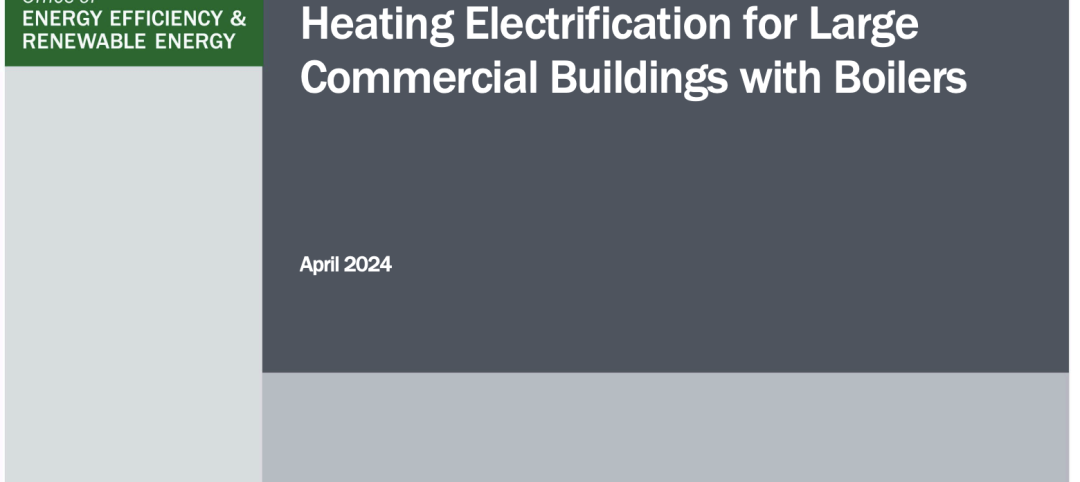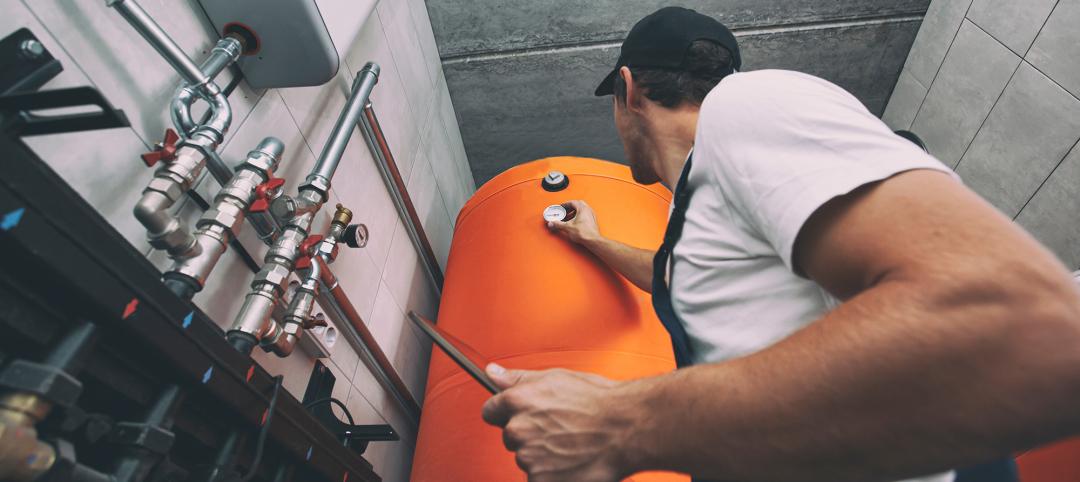Commercial building leases are getting shorter. Compared to long-term leases that were common for decades, the average lease today is three to five years. For property managers and building owners, retaining tenants beyond the five-year mark can make the difference between a highly profitable real estate asset and one that struggles to turn a profit. Recruiting new tenants is a costly venture.
Buildings are a reflection of the owner and tenants, as well as their brand and reputation. Commercial buildings where owners have paid attention to the details will have an easier time recruiting and retaining tenants over longer periods. Tenants increasingly expect a well-crafted property that feels unique, authentic, and comfortable—with technologically advanced systems and spaces that optimize performance and encourage collaboration and engagement. The following guidance will help owners and property managers keep tenants happy.
Tenant Preferences and Demands are Changing
Green building is no longer a buzzword; it is how businesses operate. According to the Northwest Energy Efficiency Alliance (NEEA), reducing energy consumption is a core business strategy that tenants expect from a lease rather than “added value.” Often, the mission statement of companies include a global and local impact clause, so leasing space from a commercial real estate firm that considers energy efficiency and sustainability critical will more likely align with their values.
In a 2019 study of 750 CRE executives across 10 countries, Deloitte found that changing workforce demands, such as flexible locations and workspaces, and technological advancements, such as artificial intelligence (AI) and Internet of Things (IoT) are increasingly important to tenant companies. Of the tenant highlights listed in Deloitte’s report, these expectations rank as number one.
Tenant Experience and Expectations
The second factor highlighted in the Deloitte report is a newer concept: the tenant experience. It was one of the top priorities for building owners.
The idea of understanding someone else’s experience and their expectations can be intangible, but there are a few key universal issues:
• Quality of life through health and wellness. Health and wellness are a necessity for tenants. Through initiatives such as Fitwel and the WELL Building Standard and the increased research and understanding of health, including body and mind, the framework exists to improve the tenant experience and the overall productivity and wellbeing of building occupants.
In particular, corporate design is looking to startups and tech giants to inform them of the latest innovations and to pinpoint what tenants are looking for. With health and wellness being the latest standard in office design for technology companies—especially for those whose work days have expanded beyond 9 to 5—building owners and company executives have embraced finding ways to keep their tenants and employees healthy and happy.
• Quality and aesthetics. Wellness also includes the aesthetic quality of the products used, in both fit and finish, and how they perform. For example, if you have ever been in a dirty, outdated elevator—or in one that jolts and vibrates—the almost-instant response of users is to question whether the elevator will even get them to their destination safely. While the ride may only last a minute, tenants want their employees and visitors to have their minds on the tasks at-hand rather than being sidetracked by elevator concerns.
A study by the University of California, Irvine found that it takes an average of about 23 minutes for an employee to get back to the level of focus they had before an interruption. If outdated systems suggest failure—even if they will not fail—concerns for their safety are considered an interruption that will keep employees and visitors from focusing important tasks. Updating your building systems not only saves energy and improves comfort; it also provides the intangible benefit of employee/tenant peace of mind.
• Reliability. Elevator downtime is often what users remember most, even if a majority of their experiences do not involve faulty machinery. Traditional elevators and escalators have an average of six to 10 downtime instances per year. In comparison, newer products—such as those in the Mitsubishi Electric portfolio—experience only one instance of downtime a year. By investing in reliable and up-to-date systems, tenants and their visitors are less likely to experience downtime, positively influencing their views of the building.
Reliability has a dollar value as well. Tenants say that even an hour of electrical or system downtime can lead to $100,000 in losses. While building owners do not necessarily know when systems will fail, reliable uninterruptible power supply (UPS) systems provide backup power when needed to keep tenants moving forward.
A commercial building is an investment, but even more so today, it is an extension of the building owner and tenants—and their ideals. When owners and property managers understand the importance of caring for their building like an artisan finely tunes their craft, the outcome is happier tenants—and higher rates of recruitment and retention.
For more information, follow the link to BuildBetterTogether.com.
Related Stories
M/E/P Systems | Oct 30, 2024
After residential success, DOE will test heat pumps for cold climates in commercial sector
All eight manufacturers in the U.S. Department of Energy’s Residential Cold Climate Heat Pump Challenge completed rigorous product field testing to demonstrate energy efficiency and improved performance in cold weather.
Smart Buildings | Jul 1, 2024
GSA to invest $80 million on smart building technologies at federal properties
The U.S. General Services Administration (GSA) will invest $80 million from the Inflation Reduction Act (IRA) into smart building technologies within 560 federal buildings. GSA intends to enhance operations through granular controls, expand available reporting with more advanced metering sources, and optimize the operator experience.
Industrial Facilities | Jun 8, 2024
8 ways to cool a factory
Whichever way you look at it—from a workplace wellness point of view or from a competing for talent angle—there are good reasons to explore options for climate control in the factory workplace.
HVAC | May 28, 2024
Department of Energy unveils resources for deploying heat pumps in commercial buildings
To accelerate adoption of heat pump technology in commercial buildings, the U.S. Department of Energy is offering resources and guidance for stakeholders. DOE aims to help commercial building owners and operators reduce greenhouse gas emissions and operating costs by increasing the adoption of existing and emerging heat pump technologies.
Codes and Standards | May 10, 2024
Guide on electrifying space heating for large commercial buildings with boilers released
The U.S. Department of Energy has released a guide on electrifying space heating for large commercial buildings with boilers. The guide summarizes key considerations for people seeking to retrofit existing large commercial and multifamily buildings, particularly those that currently heat spaces using fossil fuel-fired boilers.
ProConnect Events | Apr 23, 2024
5 more ProConnect events scheduled for 2024, including all-new 'AEC Giants'
SGC Horizon present 7 ProConnect events in 2024.
75 Top Building Products | Apr 22, 2024
Enter today! BD+C's 75 Top Building Products for 2024
BD+C editors are now accepting submissions for the annual 75 Top Building Products awards. The winners will be featured in the November/December 2024 issue of Building Design+Construction.
MFPRO+ News | Feb 15, 2024
Nine states pledge to transition to heat pumps for residential HVAC and water heating
Nine states have signed a joint agreement to accelerate the transition to residential building electrification by significantly expanding heat pump sales to meet heating, cooling, and water heating demand. The Memorandum of Understanding was signed by directors of environmental agencies from California, Colorado, Maine, Maryland, Massachusetts, New Jersey, New York, Oregon, and Rhode Island.
Sustainability | Feb 7, 2024
9 states pledge to accelerate transition to clean residential buildings
States from coast to coast have signed a joint agreement to accelerate the transition to pollution-free residential buildings by significantly expanding heat pump sales to meet heating, cooling, and water heating demand in coming years.
75 Top Building Products | Dec 13, 2023
75 top building products for 2023
From a bladeless rooftop wind energy system, to a troffer light fixture with built-in continuous visible light disinfection, innovation is plentiful in Building Design+Construction's annual 75 Top Products report.
















